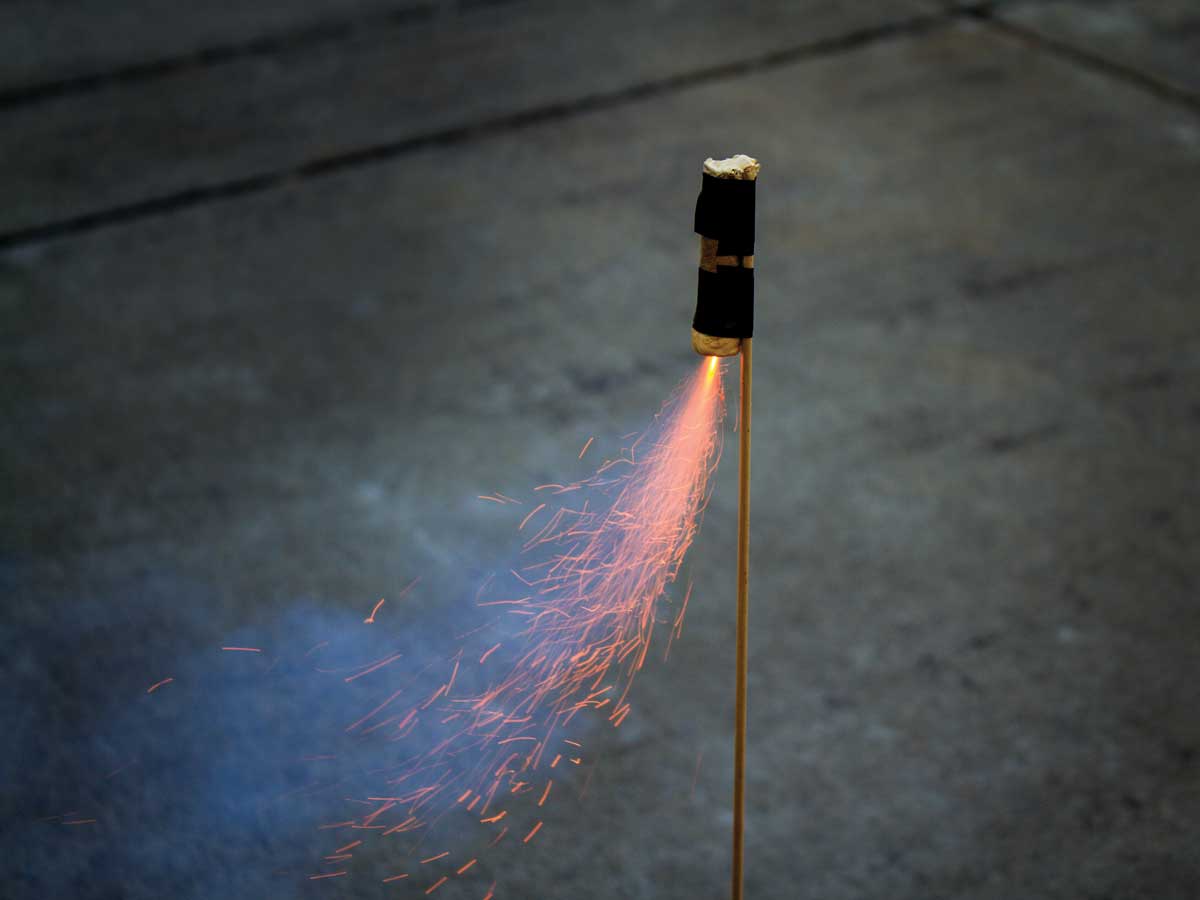Many hobby stores sell model rocketry supplies, but I think making your own rocket engine from scratch is a more meaningful and exciting experience. In this project, we’ll build on the work of rocket pioneer Jack Parsons (see MAKE Volume 13, “Darkside Rocketeer,” for more about this fascinating character). It was Parsons who invented “castable” rocket fuel, which starts as a soft, pliable material and slowly hardens, allowing it to be cast or molded into a high-performance motor.
In this project, you’ll combine two commonly available substances — granulated sugar and potassium nitrate — to make a powerful engine that can propel a small sugar rocket to impressive heights. This method involves melting a mixture of sugary fuel and chemical oxidizer (the potassium nitrate) over an electric hot plate and then pouring it into a paper rocket body where it solidifies into a rock-hard casting containing an incredible amount of chemical energy.























